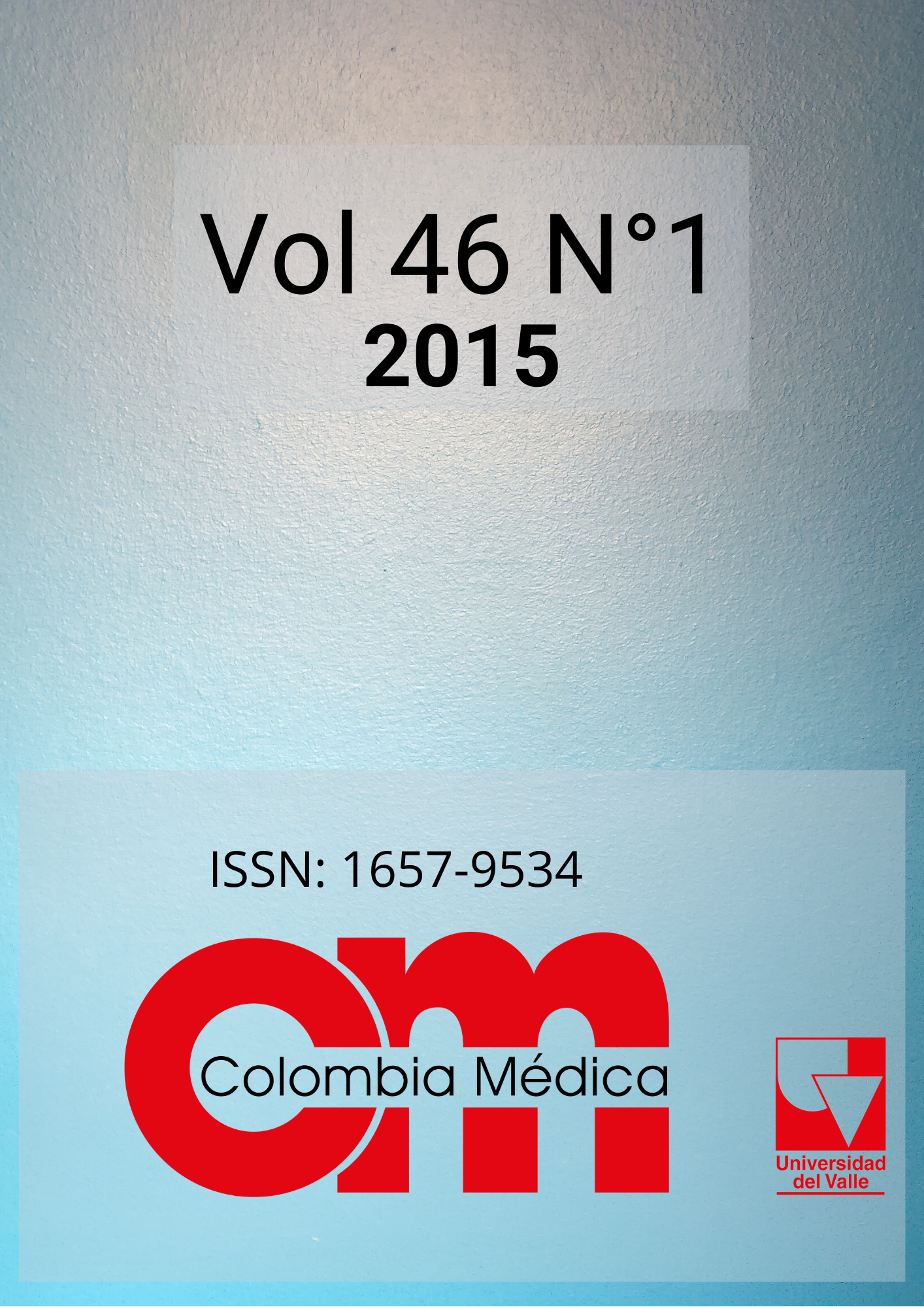Early diagnosis of diabetic retinopathy in primary care
Keywords:
Diabetic retinopathy, diabetes mellitus, type 2, macular edemaMain Article Content
Objective: To evaluate the impact of a strategy for early detection of diabetic retinopathy in patients with type 2 diabetes mellitus (DMT2) in Quintana Roo, México.
Methods: Study transversal, observational, prospective, analytical, eight primary care units from Mexican Social Security Institute in the northern delegation of the State of Quintana Roo, Mexico were included. A program for early detection of diabetic retinopathy (DR) in adult 376,169 was designed. Were diagnosed 683 cases of type 2 diabetes, in 105 patients randomized was conducted to direct ophthalmoscopy were subjected to a secondary hospital were assigned. Will determine the degree of diabetic retinopathy and macular edema was performed.
Results: In population were 55.2% female, mean age 48+11.1 years, 23.8 % had some degree of DR, 28.0% with mild non- proliferative diabetic retinopathy 48.0 % moderate 16.0% and severe and 8.0% showed proliferative diabetic retinopathy. Those over age 30 are 2.8 times more risk of developing DR, OR= 2.8; 95%CI: 0.42-18.0, and OR= 1.7; 95%CI: 1.02-2.95 women.
Conclusions: The implementation of programs aimed at the early detection of debilitating conditions such as diabetic retinopathy health impacts beneficiaries, effective links between primary care systems, and provide second level positive health outcomes for patient diseases.
Pettitt DJ, Talton J, Dabelea D, Divers J, Imperatore G, Lawrence JM, et al. Prevalence of Diabetes Mellitus in U.S. Youth in 2009The SEARCH for Diabetes in Youth Study. Diabetes Care. 2014; 37(2): 402–8. DOI: https://doi.org/10.2337/dc13-1838
Gomis R, Artola S, Conthe P, Vidal J, Casamor R, Font B. Prevalence of type 2 diabetes mellitus in overweight or obese patients attended ambulatorly in Spain. OBEDIA Study. Med Clin (Barc) 2014; 142(11): 485–92. DOI: https://doi.org/10.1016/j.medcli.2013.03.013
Colosia AD, Palencia R, Khan S. Prevalence of hypertension and obesity in patients with type 2 diabetes mellitus in observational studies: a systematic literature review. Diabetes Metab Syndr Obes. 2013; 6: 327–38. DOI: https://doi.org/10.2147/DMSO.S51325
Wilke T, Ahrendt P, Schwartz D, Linder R, Ahrens S, Verheyen F. Incidence and prevalence of type 2 diabetes mellitus in Germany: an analysis based on 5.43 million patients. Dtsch Med Wochenschr. 2013; 138(3): 69–75. DOI: https://doi.org/10.1055/s-0032-1327394
Olafsdottir E, Andersson DK, Dedorsson I, Stefansson E. The prevalence of retinopathy in subjects with and without type 2 diabetes mellitus. Acta Ophthalmol. 2013; 92(2): 133–7. DOI: https://doi.org/10.1111/aos.12095
Papali'i-Curtin AT, Dalziel DM. Prevalence of diabetic retinopathy and maculopathy in Northland, New Zealand: 2011-2012. N Z Med J. 2013; 126(1383): 20–8.
Yang JY, Kim NK, Lee YJ, Noh JH, Kim DJ, Ko KS, et al. Prevalence and factors associated with diabetic retinopathy in a Korean adult population: The 2008-2009 Korea National Health and Nutrition Examination Survey. Diabetes Res Clin Pract. 2013; 102(3): 218–24. DOI: https://doi.org/10.1016/j.diabres.2013.10.016
Jee D, Lee WK, Kang S. Prevalence and risk factors for diabetic retinopathy: the Korea National Health and Nutrition Examination Survey 2008-2011. Invest Ophthalmol Vis Sci. 2013; 54(10): 6827–33. DOI: https://doi.org/10.1167/iovs.13-12654
Ruta LM, Magliano DJ, Lemesurier R, Taylor HR, Zimmet PZ, Shaw JE. Prevalence of diabetic retinopathy in Type 2 diabetes in developing and developed countries. Diabet Med. 2013; 30(4): 387–98. DOI: https://doi.org/10.1111/dme.12119
Keenan TD, Johnston RL, Donachie PH, Sparrow JM, Stratton IM, Scanlon P. United Kingdom National Ophthalmology Database Study: Diabetic Retinopathy; Report 1: prevalence of centre-involving diabetic macular oedema and other grades of maculopathy and retinopathy in hospital eye services. Eye (Lond) 2013; 27(12): 1397–404. DOI: https://doi.org/10.1038/eye.2013.196
Wang J, Zhang RY, Chen RP, Sun J, Yang R, Ke XY, et al. Prevalence and risk factors for diabetic retinopathy in a high-risk Chinese population. BMC Public Health. 2013; 13: 633. DOI: https://doi.org/10.1186/1471-2458-13-633
Jammal H, Khader Y, Alkhatib S, Abujbara M, Alomari M, Ajlouni K. Diabetic retinopathy in patients with newly diagnosed type 2 diabetes mellitus in Jordan: prevalence and associated factors. J Diabetes. 2013; 5(2): 172–9. DOI: https://doi.org/10.1111/1753-0407.12015
Bertelsen G, Peto T, Lindekleiv H, Schirmer H, Solbu MD, Toft I, et al. Tromso eye study: prevalence and risk factors of diabetic retinopathy. Acta Ophthalmol. 2013; 91(8): 716–21. DOI: https://doi.org/10.1111/j.1755-3768.2012.02542.x
Polack S, Yorston D, Lopez-Ramos A, Lepe-Orta S, Baia RM, Alves L, et al. Rapid assessment of avoidable blindness and diabetic retinopathy in Chiapas, Mexico. Ophthalmology. 2012; 119(5): 1033–40. DOI: https://doi.org/10.1016/j.ophtha.2011.11.002
Downloads

This work is licensed under a Creative Commons Attribution-NonCommercial 4.0 International License.
The copy rights of the articles published in Colombia Médica belong to the Universidad del Valle. The contents of the articles that appear in the Journal are exclusively the responsibility of the authors and do not necessarily reflect the opinions of the Editorial Committee of the Journal. It is allowed to reproduce the material published in Colombia Médica without prior authorization for non-commercial use

